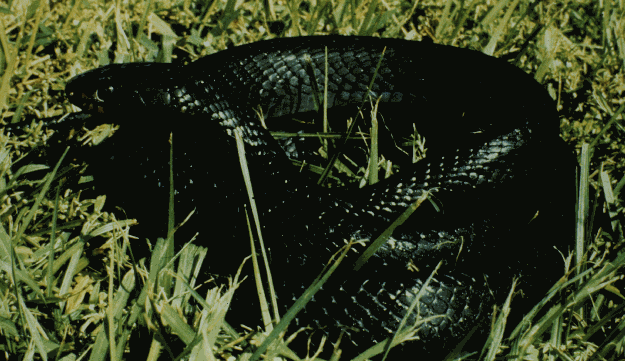


The Eastern Indigo Snake is
the largest non-poisonous snake in North America. It was federally
listed as a threatened species in
1978. Human exploitation combined with habitat loss and degradation now
restrict the species mostly to Florida. Early habitat accounts emphasized
the association of Eastern Indigo Snake with xeric sand ridge habitats
and their dependence on Gopher Tortoise burrows for overwintering. The
Indigo Snake is a top predator of a variety of prey including birds, young
turtles, frogs, and other snakes, including rattlesnakes.
Habitat
loss, degradation, and fragmentation are the greatest threats to the Indigo
Snake. Conditions that favor suitable prey populations and provide opportunity
for prey capture may be important. Gopher Tortoise burrows are used by
many potential prey items and Indigo Snakes capture prey, such as other
snakes, in these locations. Fire suppression has a negative influence
on Gopher Tortoises and possibly Indigo Snakes. Indigo Snakes use active
burrows but may prefer inactive and abandoned burrows. Other den sites
include wind throws and hollow root channels of large live oaks. Indigo
Snakes frequently use disturbed areas where clearing has occurred and where
debris piles remain.
 |